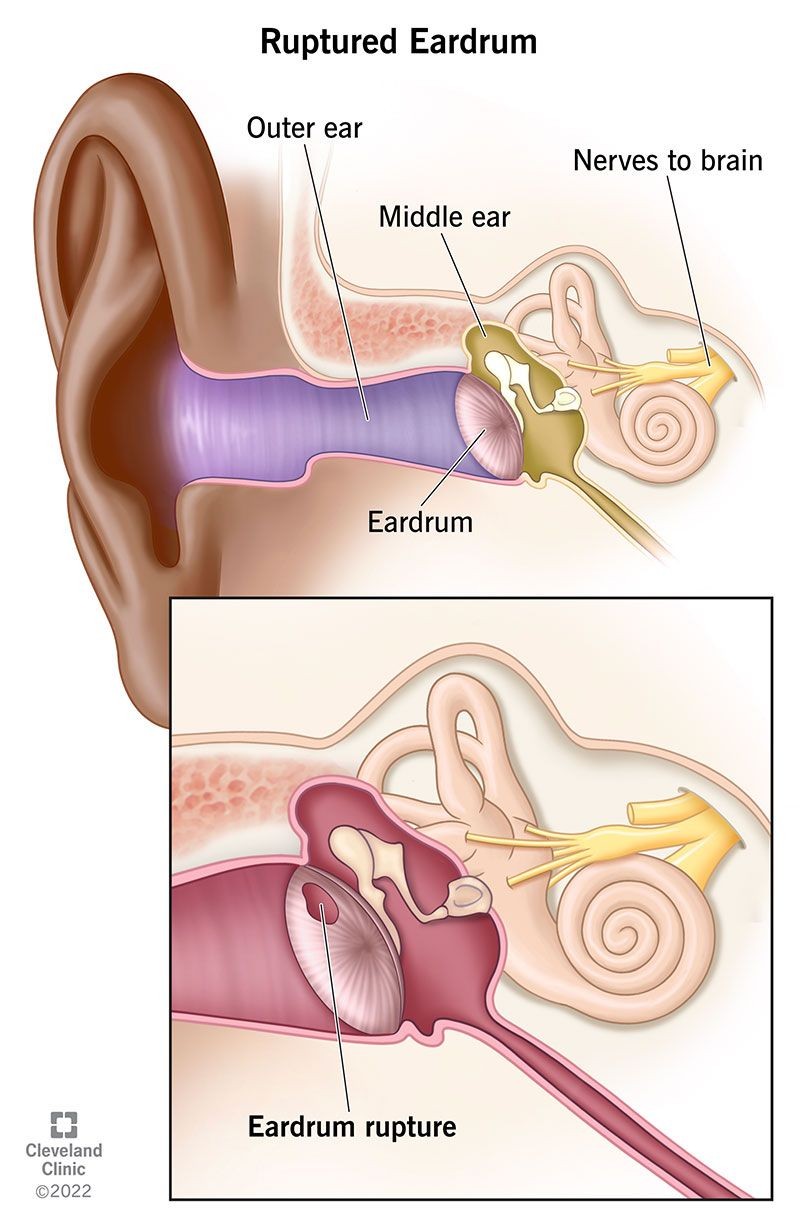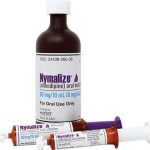
Contents
- 1 Ruptured Perforated Eardrum
- 1.0.1 What causes a ruptured eardrum?
- 1.0.2 What are the symptoms of a ruptured eardrum?
- 1.0.3 Does a ruptured eardrum cause pain?
- 1.0.4 How can I tell if I have a ruptured eardrum (diagnosis)?
- 1.0.5 What are the treatments for a ruptured eardrum?
- 1.0.6 How long does it take for a ruptured eardrum to heal?
- 1.0.7 Can I go swimming after a ruptured eardrum?
- 1.0.8 Will I lose my hearing if I rupture an eardrum?
- 1.0.9 How can a ruptured eardrum be prevented?
- 1.0.10 From
Ruptured Perforated Eardrum
When fluid buildup causes excessive pressure in the middle ear, the eardrum can rupture. Source: Brian Evans / Photo Researchers, Inc.
A ruptured eardrum, also called a perforated tympanic membrane, is a hole or tear in the eardrum. The eardrum is a thin tissue that separates the ear canal from the middle ear.
This illustration shows the location of the eardrum and its adjacent structures (external ear or auricle, ear canal, small bones [malleus, incus, and stapes]), as well as the Eustachian tube. It also demonstrates how the ear bones connect the eardrum to other structures such as the semicircular canals, the vestibular nerve, and the cochlea. Note the close relationship of the middle ear to the temporal bone.
How does a ruptured eardrum affect hearing?
In the picture above, the eardrum is connected to and moves the bones in the middle ear that send signals to the nerves and other structures. A hole in the eardrum prevents normal movement in response to sounds. Generally, larger holes result in worse hearing. Very large ruptures may prevent sound waves from reaching the bones in the middle ear, causing hearing loss.
What causes a ruptured eardrum?
A ruptured eardrum, also known as a perforated tympanic membrane, is a hole or tear in the eardrum. Many different factors can cause an eardrum rupture.
Common causes include:
- An infection, typically from viruses, bacteria, or fungi, that affects the inner ear and/or Eustachian tube. The infection exerts pressure on the eardrum and stretches it, potentially leading to perforation.
- Trauma, such as a fall impacting the side of the head, water skiing accidents, or the penetration of a foreign object like a stick or twig into the eardrum.
- Rapid atmospheric pressure changes, like those experienced during scuba diving or exposure to explosive blast waves.
- Other sources of blast waves, such as gunshots, fireworks, or explosive devices.
- Car accidents.
- Inserting sharp or even dull objects like cotton-tipped swabs into the ear canal to remove earwax.
- Sports injuries involving head trauma.
- Poorly performed ear canal irrigation to remove earwax (cerumen).
- Surgical placement of ear tubes (myringotomy).
What are the symptoms of a ruptured eardrum?
When the eardrum bursts, fluid of various colors (brown, yellow, or whitish) may drain from the ear. Source: Copyright © ISM / Phototake — All rights reserved.
Signs and symptoms of a ruptured eardrum can include:
- Whistling sounds when sneezing or blowing your nose.
- Decreased hearing.
- Hearing loss.
- Tinnitus (ringing in the ear).
- Spinning sensation (positional vertigo).
- Nausea.
- Vomiting.
- Inflammation of the middle ear (otitis media).
- Pain, particularly with an infection.
- Purulent (pus-like) or blood-tinged drainage from the ear canal in the presence of an infection.
- Chronic ear canal drainage containing blood in the presence of cholesteatoma, accompanied by hearing loss, pain, vertigo, tinnitus, and headaches.
Complications of a ruptured eardrum can include vestibular disorders (labyrinthitis, bacterial labyrinthitis, vestibular neuritis, Meniere’s disease) and mastoiditis.
Does a ruptured eardrum cause pain?
Perforations or ruptures of the eardrum may or may not cause pain, depending on the underlying cause, the size, and location of the hole. Infections are typically the primary cause of a ruptured eardrum. Pain is usually absent if no infection is present.
How can I tell if I have a ruptured eardrum (diagnosis)?
Most ruptured eardrums are diagnosed through routine otoscopy by primary care physicians, emergency medicine physicians, and/or otolaryngologists, or by medical professionals with expertise in laryngology using an otoscope. Small ruptures or holes may require otomicroscopy for detection. Screening tests (screening tympanometry) may indicate perforation but should be confirmed by physical examination. Audiometry is often performed to assess hearing loss before treatment.
What are the treatments for a ruptured eardrum?
Treatment for a perforated eardrum depends on the symptoms, the size of the rupture, and a risk-benefit analysis carried out by a doctor and the patient. Some individuals with a perforated eardrum have few or no symptoms and do not require medical treatment. However, those who engage in activities like water sports or scuba diving should discuss potential treatments and risks with their doctor.
Larger perforations may result in greater hearing loss. Audiological tests can determine the extent of the hearing loss. Surgical repair may be an option for larger perforations, but the doctor or healthcare professional should discuss the potential risk-benefits of this procedure versus the use of a hearing aid.
Over-the-counter (OTC) analgesics can be used for ear pain or discomfort due to perforation. Meclizine (Antivert) may relieve dizziness or associated vertigo. Antibiotics might be prescribed for bacterial infections. Eardrops can help alleviate ear discomfort.
How long does it take for a ruptured eardrum to heal?
A ruptured eardrum typically heals within about two months on average. Small ruptures may heal faster. However, some very large perforations, as well as some smaller ones, may not heal. In such cases, an ear, nose, and throat doctor (ENT surgeon or otolaryngologist) may perform a procedure like myringoplasty or tympanoplasty, using a graft of the patient’s fat, muscle, or other material to close the perforation and facilitate healing.
Can I go swimming after a ruptured eardrum?
Most doctors and healthcare providers advise their patients with ruptured eardrums against swimming while the eardrum is healing. The eardrum helps prevent viruses, bacteria, and contaminants from entering the inner ear. Swimming can introduce pressure changes that force contaminants and bacteria through the ruptured membrane, potentially causing inner ear infections. This caution is especially important for individuals who enjoy scuba diving. The possibility of swimming and other similar activities can be discussed with a doctor.
By clicking Submit, I agree to the MedicineNet’s Terms & Conditions & Privacy Policy and understand that I may opt out of MedicineNet’s subscriptions at any time.
Will I lose my hearing if I rupture an eardrum?
A perforated or ruptured eardrum can cause hearing problems, but it does not mean complete hearing loss. However, temporary hearing decline may occur until the eardrum heals. Severe ruptures may result in permanent hearing loss, making the individual a candidate for eardrum surgery. Hearing aids can help those with hearing loss.
How can a ruptured eardrum be prevented?
Prevention methods for ruptured eardrums may include:
- Getting prompt treatment for middle ear infections as soon as they develop.
- Clearing your ears during air travel to equalize pressure, by yawning, chewing gum, or gently attempting to blow your nose while pinching your nostrils and keeping your mouth closed.
- Keeping small objects that children might put in their ears out of their reach. Teaching children about the potential harm of inserting items into their ears if they are old enough to understand.
- Avoiding digging excessive earwax out of your ears with cotton swabs, paperclips, hairpins, or other objects that can easily rupture the eardrum.
- Avoiding high levels of noise (e.g., from industrial machinery or gunshots) and sharp atmospheric pressure changes (e.g., from explosions) by using protective earplugs or earmuffs.


